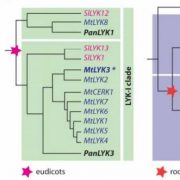
An evolutionary perspective on LysM receptors reveals conserved mechanisms for microbial signal perception
Blog, Plant Physiology, Plant Physiology: News and Views, ResearchLena Maria Müller
Boyce Thompson Institute
[email protected]
Plants are in constant contact with millions of microbes, which can be pathogenic or establish mutualistic interactions with the plant. One well-studied mutualistic interaction is the nodulation symbiosis of legumes with nitrogen-fixing…
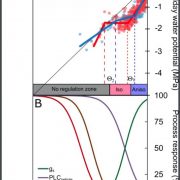
Extrapolating physiological response to drought through step-by-step analysis of water potential
Blog, Plant Physiology, Plant Physiology: News and Views, ResearchGuillaume Charrier
Université Clermont Auvergne, INRAE, PIAF, F-63000 Clermont-Ferrand, France.
[email protected]
Water potential (Ψ) defines the energy required to move water between the different compartments of a closed system. Water flows passively in the direction of decreasing…
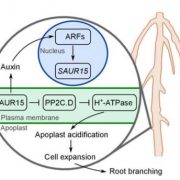
SAUR15 connects auxin perception to lateral and adventitious root formation
Blog, Plant Physiology, Plant Physiology: News and Views, ResearchCharles Copeland1
1Department of Plant Microbe Interactions, Max Planck Institute for Plant Breeding Research, 50829 Cologne, Germany
ORCID: 0000-0001-8535-8615
[email protected]
As plants grow, they produce new organs such as leaves, lateral roots, and flowers. Plant development…
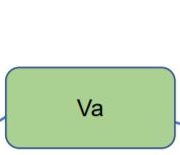
Barley RIPb opens the gates for epidermal fungal penetration
Blog, Plant Physiology, Plant Physiology: News and Views, ResearchElisa Dell’Aglio
Institut National des Sciences Appliquées de Lyon
Lyon,
France
[email protected]
The ascomycete Blumeria graminis f. sp. hordei (Bgh) is a powdery mildew causal agent, specifically adapted to barley (Hordeum vulgare), wheat (Triticum aestivum, Triticum turgidum)…

Lignification and oxidative enzymes: Localization, localization, localization!
Blog, Plant Physiology, Plant Physiology: News and Views, ResearchName Marc Somssich
Affiliation University of Melbourne
ORCiD 0000-0001-5092-6168
[email protected]
Lignification of cell walls is a pivotal process in plant life. Lignin is a biopolymer that provides additional stability to secondary cell walls (SCWs), enables vascular cells to…
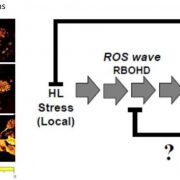
MYB30 links the ROS wave to systemic acclimation
Blog, Plant Physiology, Plant Physiology: News and Views, ResearchAmna Mhamdi
Ghent University, Department of Plant Biotechnology and Bioinformatics, and VIB Center for Plant Systems Biology, 9052 Ghent, Belgium
Address correspondence to [email protected]
Stress signals trigger systemic signaling and acclimation. The propagation of reactive oxygen species…

Unexpected Role of a TCP Transcription Factor in Seed Oil Biosynthesis
Blog, Plant Physiology, Plant Physiology: News and Views, ResearchTianhu Sun
ORCID ID: 0000-0002-2513-1387
Plant Breeding and Genetics Section, School of Integrative Plant Science, Cornell University, Ithaca, New York 14853
[email protected]
Plant seed oils (such as canola oil, sunflower oil, and soybean oil) are important for the human diet and store energy…
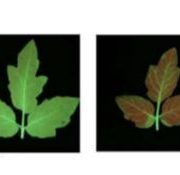
A novel Trojan horse for molecule delivery into plants
Blog, Plant Physiology, Plant Physiology: News and Views, ResearchMarc-Sven Roell1
ORCID ID: 0000-0003-2714-8729
1Institute of Plant Biochemistry, Heinrich-Heine University Düsseldorf, Universitätsstrasse 1, 40225 Düsseldorf, Germany
[email protected]
The agronomic application of nanotechnology harbors huge potential for future agriculture (Landry…
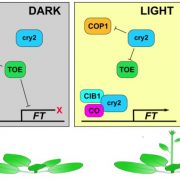
Cryptochromes Go Toe to Toe with TOEs Too
Blog, Plant Physiology, Plant Physiology: News and Views, ResearchScott Hayes
Affiliation: Laboratory of Plant Physiology, Wageningen University, Wageningen 6708 PB, The Netherlands
ORCiD: 0000-0001-8943-6238
[email protected]
To breed or not to breed, that is the question. The switch from vegetative to reproductive growth is one of the most important…

